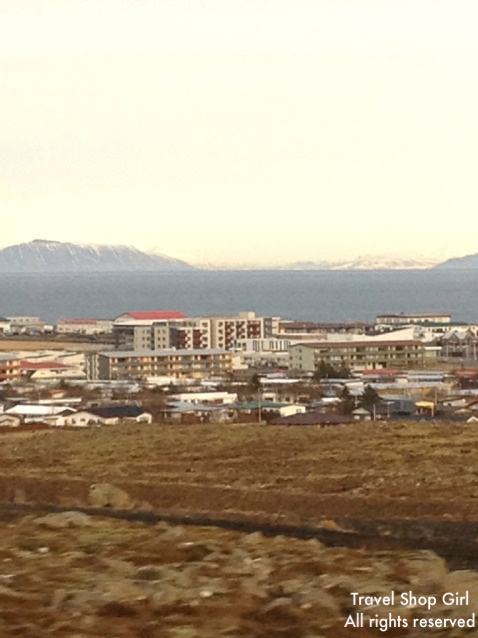
My guess is that if you are like me and live anywhere outside of Iceland, you are more than familiar with the concept of names and how people call and refer to one another. Take that and forget about it because in Iceland they use patronymics. What?
Let’s start with an example like that of little John Smith. He got his name from his parents, Mary and Steve Smith. This is a pretty straightforward process as you simply name your child and then the child takes your last name. Maybe your mother and father have different last names like my husband and I have. Our son has my husband’s last name, but could easily have a hyphenated last name as well. That’s probably the only confusion I can see regarding last names that I have run into here in the United States. As far as first names, most people pick a name because they like it, it has a sentimental connection, or is considered a tradition in the family. In my husband’s family, it’s a tradition to give your son his grandfather’s first name as his middle name. But in the end, the man’s last name is what is passed down from generation to generation.

Toss all that aside and try to wrap your head around patronymics. I had never heard about patronymics until I visited Iceland recently. This old Nordic tradition of patronymics as well as matronymics is still used today in Iceland and by some on the Faroe Islands, an archipelago of 18 islands some 450 miles southeast of Iceland. In a nutshell, patronyms are names based on the father’s first name while matronyms are names based on the mother’s first name. Instead of taking the last name or surname of your father or mother, surnames aren’t fixed and aren’t passed down to one’s children. Instead, a suffix is added to the first name of the parent, usually the father to create the patronym or surname. Therefore, to fully understand this concept, you have to understand that a patronym is not a surname, but instead will change for each generation and will also be gender dependent.
To create the patronymic name, specific suffixes are added to the genitive form, sometimes to the nominative form of the first name of the father or mother:
-son (= son) or -dóttir (= daughter)
Examples:
Patronyms: Arni -> Arnason / Arnadóttir
Matronyms: Anna -> Önnuson / Önnudóttir

Family names don’t exist in Iceland and as such, members of the same family will have different last names. This is especially confusing to foreigners, but can make for further confusion when Icelanders travel abroad. Imagine a family of four (mother, father, and two kids) traveling together outside of Iceland. Their passports will show that they each have different names. Try explaining that to TSA! When a woman gets married in Iceland, she doesn’t change her name because she can’t become someone else’s daughter. To further confuse the situation, people are listed by their first names in the phone book. Can you imagine looking someone up in the phone book and realizing that everyone is listed by their first name instead of last name? People call each other by their first names, even doctors. Titles such as Mr. and Mrs. are not used nor is expected in Iceland, regardless of their societal importance.

I completely appreciate that Icelanders retain so much of their history through their language as they still speak the language of the Vikings, although modern Icelandic has undergone pronunciation and vocabulary changes. I also appreciate that, despite the fact that it is seldom understood, Icelanders continue to use patronyms and matronyms. Unlike its neighboring countries, Iceland continues to use patronyms. New name laws were introduced in Denmark in 1828, in Sweden in 1901, and in Norway in 1922, which forced the citizens of those countries to have inheritable surnames, thereby forbidding and ending the use of patronyms in those countries.
Don’t think this would work in English? You’re wrong! We have many names from this system in the English language including Williamson, Davidson, Stevenson, Johnson, and so on. Spanish surnames ending in -ez originated as patronymics denoting “the son of”—Fernández (son of Fernando), González (son of Gonzalo), but not every such surname is patronymic. This is because in many Spanish dialects the Spanish-language letters z and s are pronounced alike, leading to the same word being spelt with either “s” or “z”. Here is site a list of names that include Russian, Polish, Welsh, Gaelic, and Arabic names, among others.
Take a moment to consider what your name would be if you were born in Iceland. Play around with the patronymic system for a while and you, too, will appreciate what it is that Iceland is strongly holding onto by retaining this naming method. Although you might initially think that it is the strangest thing you’ve ever heard of in your life, Icelanders retain this naming method from their ancestors along with many other ancestral traditions that they continue today, all of which is reflected in every facet of their culture. That, in itself, is something to be proud of in an age where life moves at lightning speed and tradition is usually usurped by technology and convenience.




quite the write up you have here. I’d love to see iceland before I die but it is so far away. and cold
Norway, Sweden and Denmark still use patronyms, but not nearly to the same extent as Iceland/Faroes.
Interesting post.